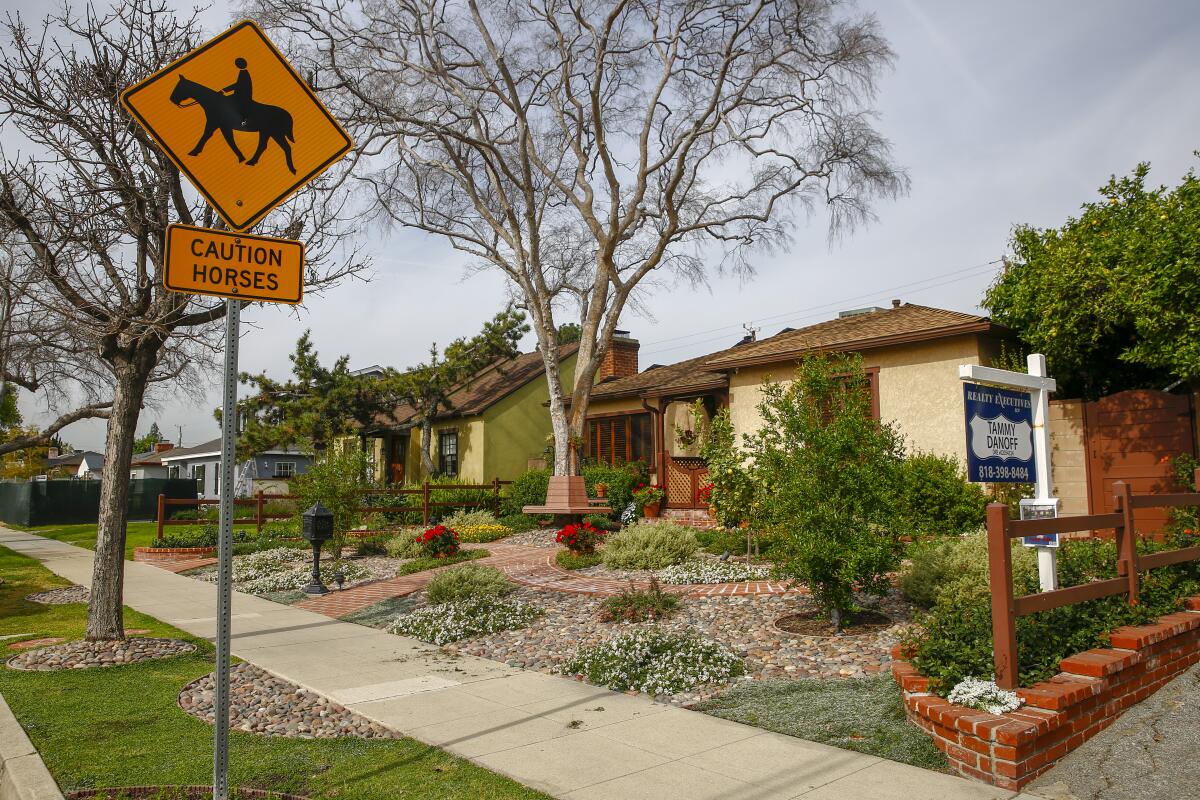Column: California’s population growth has slowed. Blame the exorbitant housing costs

- Share via
SACRAMENTO — California’s population mix is being reshuffled. People are leaving and fewer are arriving from other states. But who are they?
You might be surprised.
We’re not losing high-income people fleeing exorbitant California taxes. Some, yes. But more affluent people have been moving here than departing.
They can afford our escalating costs of living.
Political spin about wealthy people abandoning California is fake news.
The state is mostly losing low- to middle-income people who can’t hack the living costs, especially the expensive housing.
Moreover, recently arrived foreign immigrants are not mainly from Latin America. They’re more likely highly educated tech engineers or healthcare workers from Asia.
One common perception is true: Our business climate is widely seen as unfriendly, discouraging economic investment. There’s too much red tape in stifling government regulation with mountains of fees. And those taxes.
California’s slow-growing population, reversing the historical pattern of booming growth, was highlighted in last week’s report by the U.S. Census Bureau. It showed that our population grew below the national average during the decade after the 2010 census — by 6.1%, compared with 7.4% for the nation.
We added 2 million people from births and migration and now are home to 39.5 million.
For the first time in our 170-year history, California will lose one congressional seat and one electoral vote in presidential elections. But we’ll still have far more than any other state. So, it’s not a big deal — unless it’s the start of a long-term pattern of California rejection and desertion.
That would reduce the workforce, dampen the economy and weaken the tax base for state and local governments, including public education.
But conversely, freeways wouldn’t be as congested, there’d be more space for the rest of us and less strain on our scarce water supply.
Somewhere, there should be an optimum balance between Rust Belt status and exploding population that nets us healthy economic growth.
Census results show that for the first time in our 170-year history, California will lose a congressional seat.
The biggest California turnoff is high housing costs. The latest median price for a home in Los Angeles County is $750,000, up 17.2% in the last year. In Orange County, it’s $835,000. In San Francisco, forget it: $1.4 million.
Supply isn’t keeping up with demand and hasn’t for years.
California needs to build at least 180,000 new homes a year, experts estimate. It has been building only around 80,000.
Why?
“It takes forever to get through the approval process in California — much longer than any other state,” says Dan Dunmoyer, president of the California Building Industry Assn.
“In California it can take 20 years to get a project going. In Arizona and all neighboring states, they can do it in less than 20 months. Time is money. A lot of the housing cost is built into how long it takes to develop land. Then how much in fees local government charges. No other state comes close.”
The Legislature and various governors have wrestled with the housing crisis for years without agreeing on a comprehensive long-term solution.
The pandemic has created even greater demand for single-family houses, Dunmoyer says. That’s because many employees were ordered to work from home.
“A couple living in a loft in San Francisco, stuck in a small place with a crying kid, they want to have a bigger place with a backyard,” Dunmoyer says.
“We’ve got people buying homes in Bakersfield who now can work there using Zoom for companies located in center city L.A. Sacramento is exploding with people from the Bay Area.”
Vacation destinations have become primary homes during the COVID-19 pandemic as Lake Tahoe and Palm Springs see surges in population and housing costs.
Having experienced remote work, many employees now prefer it to aggravating commutes. It may become part of the permanent future. Will people move out of state to live less expensively while working remotely for California companies? That’s unknown.
This is what we do know about those departing California and arriving from other states: For starters, there were more departures than arrivals during the decade.
“The flow out of the state was especially stark during the last two years, with a net loss of almost 500,000 people,” according to the independent Public Policy Institute of California.
“People leaving tend to be poorer and less educated than those coming in,” says Eric McGhee, a PPIC demographer. “It’s not wealthy people leaving.”
PPIC research found an enormous net loss of adults with incomes less than $50,000, but a relatively small overall gain in people with high incomes.
It also found that 52% of recently arrived adult immigrants had at least a bachelor’s degree. Just 38% of U.S.-born California adults are college grads.
And 56% were from Asia, more than double the 27% from Latin America.
“Immigrants from India are the fastest-growing and most educated group in California,” the PPIC report read.
Foreign immigration was slowed by Trump administration policies, according to state demographers.
But California’s biggest slow-growth factor is fewer babies being born, state chief demographer Walter Schwarm says. California’s birth rate dropped twice as much as the national average.
Why? Women here are staying in college longer and then focusing on careers. Couples are marrying later.
Another truth: “A lot of people leaving California are older,” Schwarm says. They’re retirees who want to live where their money will go further.
Some also are following their departing offspring who can’t afford to live in the state where they grew up.
Many readers have emailed me to say they’d be happy if California’s population was smaller. But they probably wouldn’t like it so much if their own kids and grandkids took off for a more affordable state. And that’s happening a lot.
More to Read
Sign up for Essential California
The most important California stories and recommendations in your inbox every morning.
You may occasionally receive promotional content from the Los Angeles Times.













